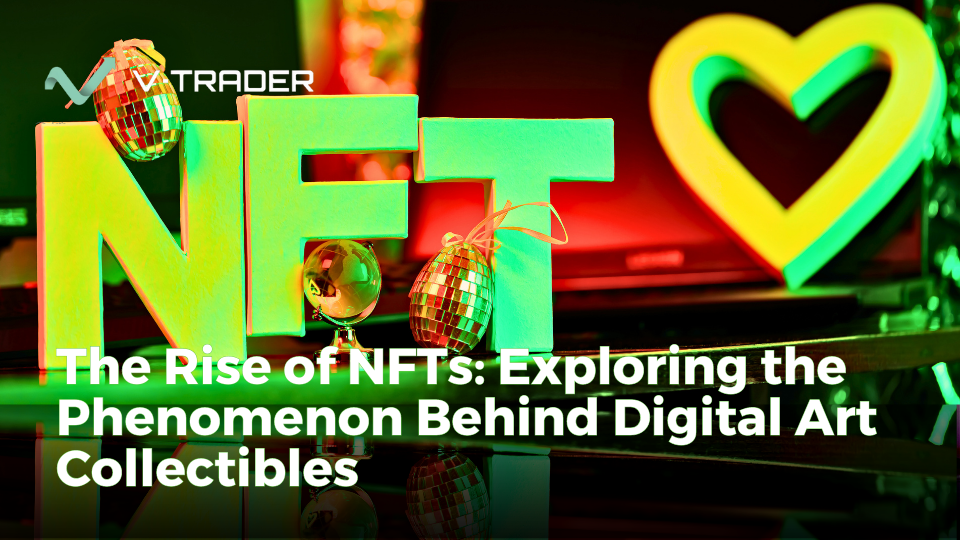Introduction:
The world of art has witnessed a groundbreaking revolution with the emergence of non-fungible tokens (NFTs). These digital assets, built on blockchain technology, have transformed the way we perceive and trade art. NFTs enable artists to tokenize and sell their unique digital creations, giving rise to a new era of digital art collectibles. In this article, we will delve into the phenomenon behind NFTs, exploring their origin, mechanics, and the impact they have had on the art market.
I. Understanding Non-Fungible Tokens (NFTs)
1.1 Definition and Characteristics:
Non-fungible tokens, or NFTs, are digital assets that represent ownership or proof of authenticity of a unique item, such as artwork, music, videos, or virtual real estate. Unlike cryptocurrencies like Bitcoin or Ethereum, which are fungible (interchangeable), NFTs are distinct and indivisible, each with its own distinct value and properties.
1.2 How NFTs Utilize Blockchain Technology:
NFTs rely on blockchain technology, explicitly utilizing smart contracts, to establish and enforce ownership rights. By leveraging the transparency and immutability of the blockchain, NFTs provide a secure and decentralized framework for buying, selling, and trading digital assets.
II. The Evolution of Digital Art Collectibles
2.1 Digital Art before NFTs:
Digital art has been in existence for decades, but its value and ownership have often been difficult to establish and protect. Prior to the advent of NFTs, artists faced challenges in proving the uniqueness and scarcity of their digital creations, hindering their ability to monetize their work effectively.
2.2 The Birth of NFTs:
NFTs gained widespread attention and popularity in 2017 when the Ethereum blockchain introduced the ERC-721 standard, paving the way for the creation and exchange of unique digital assets. This breakthrough allowed artists to mint and sell NFTs, establishing verifiable ownership and provable scarcity.
III. The Impact of NFTs on the Art Market
3.1 Empowering Artists:
NFTs have provided artists with unprecedented opportunities to monetize their digital creations directly. By eliminating the need for intermediaries like galleries or auction houses, artists can sell their work directly to collectors, retaining a higher percentage of the revenue generated. This empowerment has opened new avenues for emerging artists to gain recognition and financial success.
3.2 Establishing Authenticity and Provenance:
One of the significant advantages of NFTs is their ability to prove the authenticity and provenance of digital art. Through the blockchain, collectors can verify the ownership history and ensure that the artwork they purchase is original and not subject to duplication or forgery. This trust in provenance has brought newfound credibility to the digital art market.
3.3 Unlocking New Revenue Streams:
NFTs have created additional revenue streams for artists beyond the initial sale. Smart contracts can be programmed to include royalties, enabling artists to receive a percentage of the resale value whenever their NFTs change hands. This residual income potential has transformed the art market by providing ongoing support for artists throughout their careers.
IV. Criticisms and Challenges in the NFT Space
4.1 Environmental Concerns:
The energy consumption associated with blockchain technology, particularly in the case of proof-of-work blockchains like Ethereum, has raised concerns about the carbon footprint of NFTs. The high energy consumption required for mining and maintaining the blockchain has prompted debates about the sustainability of the NFT ecosystem.
4.2 Issues of Ownership and Copyright:
NFTs have sparked discussions regarding the ownership and copyright of digital art. While NFTs offer a mechanism to claim ownership, questions arise when the underlying content itself is not original or when NFTs are created without the consent of the artist. Clear guidelines and legal frameworks are still evolving to address these challenges.
V. Future Perspectives and Conclusion
5.1 Expanding Applications of NFTs:
Beyond art, NFTs have the potential to revolutionize various industries, including gaming, music, virtual real estate, and even identity verification. The ability to establish unique digital ownership can redefine how we interact with digital assets across different domains.
5.2 The Future of NFTs:
While the NFT market has experienced tremendous growth and mainstream adoption, its long-term sustainability and evolution remain subjects of speculation. As the technology matures, scalability and environmental concerns must be addressed to ensure a balanced and responsible NFT ecosystem.
Conclusion:
Non-fungible tokens have ushered in a new era for art collectors, artists, and the digital art market as a whole. By combining blockchain technology, digital creativity, and decentralized ownership, NFTs have offered an unprecedented level of authenticity, provenance, and monetization opportunities for artists. However, the ongoing growth and acceptance of NFTs also require careful consideration of environmental impact, legal frameworks, and the responsible evolution of this transformative technology.
Written by Agbo Obinnaya.
Check out our Ethereum Gas Fee App on App Store.
Check out our Ethereum Gas Fee App on Play Store.
Join the conversation on Twitter: Click here.
For media inquiries or interviews, please contact us here.
About vTrader News:
vTrader News is a renowned international news platform with comprehensive coverage of cryptocurrency, business, finance, technology, and entrepreneurship.
With a global readership, vTrader News provides unparalleled insights into the latest developments shaping the world of cryptocurrency, finance, and other emerging industries.
Learn More About vTrader: Click here.



I all the time emailed this blog post page to all my associates, because
if like to read it afterward my friends will too.
Thanks for the support. Check out our trading platform at vtrader.io